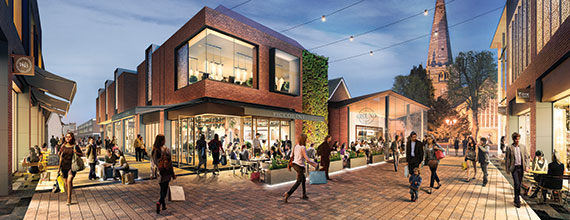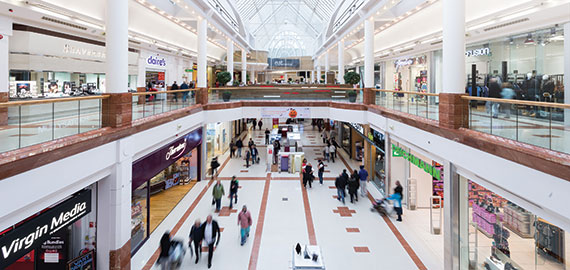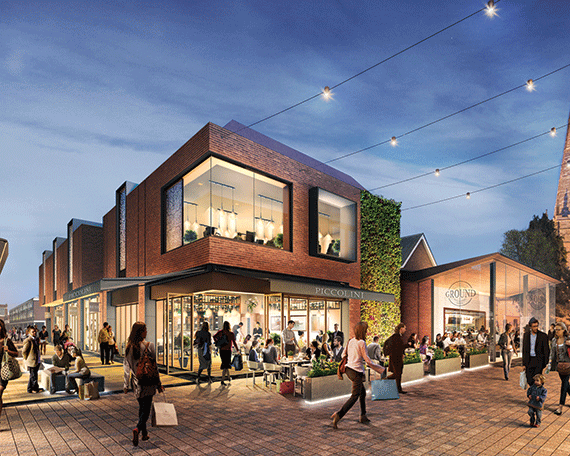Solihull Council is demanding high-quality design in exchange for new development. Mark Simmons reports
Later this year Solihull Council expects to sign off on its town centre masterplan that sets out a development framework for the next 20 years. Recent public consultation suggests that many residents and businesses approve.
“The feedback is very supportive,” says deputy council leader Ian Courts. “We want to make this a better place and most people will support that.”
The locals may be happy, but what do planning professionals make of the council’s vision for Solihull? Simon Neate, chairman of Indigo Planning, says: “It is good to see that the masterplan is not suppressing future creativity, nor hindering the ability of the town centre to respond to external influences.
“The proposals outlined are certainly welcome. However, it is vital that a balance is struck between attracting new investment and maintaining Solihull’s intrinsic character.”

Courts agrees and is confident that the town will set high design standards. He says: “We need outstanding architecture. People should be aware that we don’t think it is necessary to compromise. Developers will obviously want to increase density but will get their bucks back in place-making.”
After a meeting with IM Properties at the start of the year to discuss the planned refurbishment of Mell Square (see retail, below), Courts describes the developer as being “on the same page”.
Kathryn Ventham, Solihull-based partner at planning consultant Barton Willmore, says: “The area around Mell Square has recently been the weak spot of the town centre. It would benefit from more comprehensive development to create a hotspot for the town linking seamlessly with Touchwood. That could make a real difference and the challenge, not unusually, will come in the form of aligning interests and multiple ownerships.”
In brief: Solihull town centre masterplan
• The masterplan seeks to redress imbalance in the town centre, which is currently dominated by retail and commercial uses with little residential and poor connectivity for pedestrians and cyclists. The masterplan provides for a more diverse mix of users and priority for those walking, cycling and using public transport.
• It aims to create visually appealing gateways around the town centre, including a new railway station relocated closer to the town centre core.
• Included is new development potential for up to 800,000 sq ft of offices, 125,000 sq ft of other commercial space, including leisure, and 1,500 homes.
Offices: an evolving offer
Those who scoff at Solihull’s ambition to create around 800,000 sq ft of offices may want to consider that the Solihull/M42 corridor is the most significant office market in the West Midlands outside central Birmingham.
And with a current price differential of £9 per sq ft in Solihull’s favour (current prime rents are £23 per sq ft), there appears to be plenty of growth potential. That’s unlikely to come at the expense of Birmingham – as with the retail sector (see below), property professionals point out that the two locations complement rather than compete with each other.
“The two can grow and develop in tandem, driving the success of the wider city region,” says Ben Thacker, office agency director at Savills. “Solihull has undergone a resurgence mirroring that seen in Birmingham and benefited from the improvements and growth of Birmingham city centre as an office location.
“The town increasingly demonstrates wide sector appeal with no single dominant sector demand readily identifiable, but its offer is evolving.”
Retail: no competition with other centres
For more than a decade Solihull revelled in the fact that the only John Lewis in the whole of the West Midlands was not in central Birmingham but in the anchor of Solihull’s own Touchwood. When the department store finally opened a flagship store in Birmingham’s Grand Central in September 2015, the impact on Solihull was unknown.
Fifteen months on it seems that remarkably little has changed. “Touchwood still has a dominant offer and plays a key regional role,” says Claire Yeadon, asset manager at owner Lend Lease. “Solihull and Birmingham have different catchments.”
It is a view echoed by Peter Cooper asset management director at Hammerson, owner of Birmingham’s Bullring and co-owner of Grand Central. He explains: “Solihull is far enough away from central Birmingham to have its own retail weather system.”
Some retail experts suggest there is a risk that satellite towns around Birmingham may not get as much investment as the city centre, but that’s not the case in Solihull, where Lend Lease is funding a 115,000 sq ft retail and leisure extension to Touchwood, due to start later this year and open in 2019. Nearby, IM Properties, owner of the adjacent Mell Square, is putting money into a phased refurbishment there.

Similarly, Intu plans to invest up to £100m at Intu Merry Hill over the next few years, starting with a rolling refurbishment of the main mall. Like his peers in central Birmingham and Solihull, Nick Round, regional director at Intu, is not hung up about competing centres. Instead, he says: “Transport is important for us and we are hoping the Metro link will open in 2023.”











